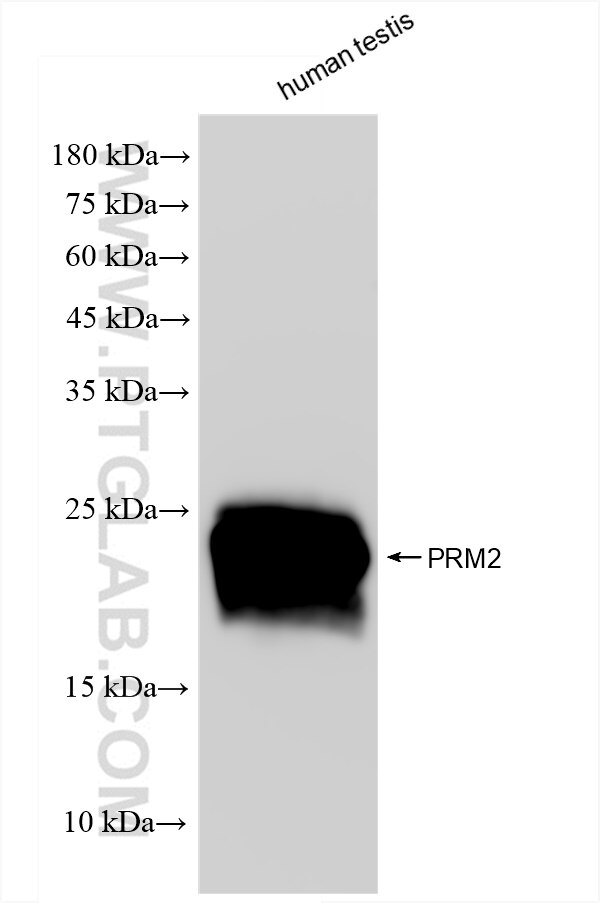Tested Applications
| Positive WB detected in | human testis tissue |
Recommended dilution
| Application | Dilution |
|---|---|
| Western Blot (WB) | WB : 1:5000-1:50000 |
| It is recommended that this reagent should be titrated in each testing system to obtain optimal results. | |
| Sample-dependent, Check data in validation data gallery. | |
Product Information
83814-1-RR targets PRM2 in WB, ELISA applications and shows reactivity with Human samples.
| Tested Reactivity | Human |
| Host / Isotype | Rabbit / IgG |
| Class | Recombinant |
| Type | Antibody |
| Immunogen | PRM2 fusion protein Ag5952 Predict reactive species |
| Full Name | protamine 2 |
| Calculated Molecular Weight | 13 kDa |
| Observed Molecular Weight | 10-20 kDa |
| GenBank Accession Number | BC066338 |
| Gene Symbol | PRM2 |
| Gene ID (NCBI) | 5620 |
| RRID | AB_3671401 |
| Conjugate | Unconjugated |
| Form | Liquid |
| Purification Method | Protein A purfication |
| UNIPROT ID | P04554 |
| Storage Buffer | PBS with 0.02% sodium azide and 50% glycerol , pH 7.3 |
| Storage Conditions | Store at -20°C. Stable for one year after shipment. Aliquoting is unnecessary for -20oC storage. 20ul sizes contain 0.1% BSA. |
Background Information
PRM2 (Protamine-2) is the main DNA-binding protein in the sperm nucleus, consisting of a C-terminal mature PRM2 (mPRM2) domain and an N-terminal lytic PRM2 (cPRM2) domain, which is lyzed sequentially after binding to DNA. PRM2 plays an important role in spermatogenesis and development. PRM2 is specifically expressed in sperm and localized in the sperm nucleus.
Protocols
| Product Specific Protocols | |
|---|---|
| WB protocol for PRM2 antibody 83814-1-RR | Download protocol |
| Standard Protocols | |
|---|---|
| Click here to view our Standard Protocols |



